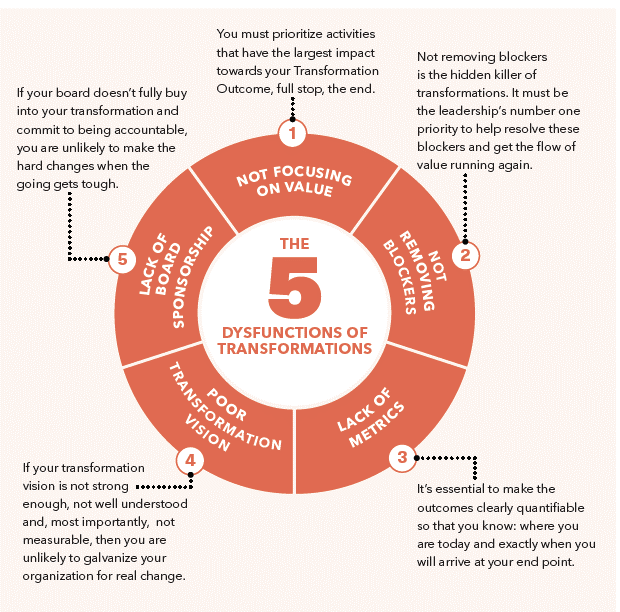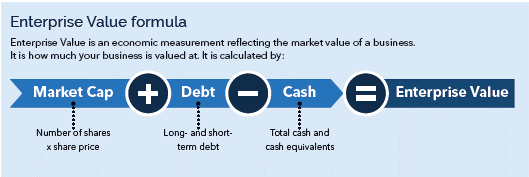If there is one stage in a company's growth that is crucial to get right, it is an overseas expansion. However, business transformation at any level poses a daunting challenge that many corporations fail.
Cuan Mulligan, co-founder of The HERO Transformation Framework, offers his advice to business leaders looking to take their company to other nations.
Upscaling an organisation to operate overseas is a tough feat and always fraught with difficulties. There are many factors to consider. For example, these five key steps to scaling international are definitely necessary, but are they sufficient?
Remember that an overseas expansion is not a normal project. It is a transformation, and if you spend any time online reading about transformations, you will quickly come to realise they are daunting and the majority fail.
- The Wall Street Journal ran a survey of directors, CEOs and senior executives which found that digital transformation risk was their #1 concern in 2019.
- The Harvard Business Review states that 70% of large-scale transformations fail to meet their goals.
- Forbes/Towers Watson reports that only 25% of change management Initiatives are successful over the long term.
Delivering a successful transformation has never been so important. In a rapidly changing world of consumer trends, technology acceleration and disruption, geopolitical shifts and now the huge impact of COVID-19, transformation success may be the difference between a business surviving or collapsing into the scrapheap of history. Add on the complexity of an overseas expansion and the odds are against you.
So how do you set up your transformation for success?
- Get very clear on why current transformations fail;
- Design, really design your transformations;
- Establish a transformation delivery capability that is designed to mitigate the normal pitfalls of change.
1. Why do so many transformations fail when they have large budgets, excellent people and strong business cases?
From our experience over many years of leading transformations, advising transformation teams and also viewing transformations from a distance, we saw some common patterns and created the five dysfunctions of transformation that you need to address to make your transformation more likely to succeed:

2. Design your transformation
Transformation Design is the process by which you clarify the current performance and Transformation Target Outcome (the value to the organisation) and define how much Enterprise Value this overseas expansion will create. It might sound obvious but, after a transformation, your organisation should be both fundamentally and measurably improved. The transformation is going to be disruptive and require a significant investment. To warrant this risk, the reward (Enterprise Value) needs to be worth it.

To design your transformation, you need to do the following four activities:
- Establish your Transformation Outcome - This is the measurable and compelling positive impact on your organisation’s Enterprise Value that will be created through this overseas expansion.
- Understand your organisation's Current Performance - Capture the current ways of working, how they contribute to current performance and get clear on what affects this performance - like, for example, your governance. This will help you identify what areas need to be changed to accommodate the new overseas element of your organization and what parts can be lifted and shifted to give you a head start.
- Create your Transformation Expansion Plan - Every company's plan will be different; there is no pre-canned plan. However, we strongly advise that every initiative be clearly linked to some contribution to the overall outcome. This is fundamental to helping you prioritise the way forward. This might sound obvious but it is deceptively difficult to implement. We see far too many transformations focus on what is easy, doing what is easy often does not correlate to what has the greatest impact.
- Get Ready - Formal approval to release funds and start the work is key, but so is ensuring that you have a reliable mechanism to track progress. Your ability to measure the progress of your transformation can not be overstated. Invest properly in this capability or else you will be flying blind in delivery.
[ymal]
3. Establish a transformation delivery capability
Once you have a solid design of your expansion, it's time for the rubber to hit the road and you can start to execute your overseas expansion. While every overseas expansion will differ, there are some core principles that you can follow to increase the chance of success and ensure that you are on the right track.
- Establish a formal blocker removal capability. Every initiative will get blocked at some stage. Sometimes it's something external, like a local regulation that you can do little about, but there are a significant number of blockers that can be resolved internally. Iissues around resource allocation, legal support or budget are examples of this. It must be the leadership’s number one priority to help resolve blockers and get the flow of value running again. But we rarely see this in practice and the normal behaviour is for blockers to sit on the shelf and slowly strangle the delivery over time.
- Install dual accountability into the transformation team. Most organisations have a top-down-only accountability model, where the delivery teams are held accountable for delivery. This is not enough. It's key that these delivery teams are empowered to hold the more senior people in the transformation team accountable for the rapid removal of the identified blockers.
- Beware of reporting watermelons. Most large scale change programmes have so many moving parts that the reports generated to update leadership on progress are overwhelming and the leadership barely have enough time to consume them before they are out of date. The volume of data in these reports can also keep the conversations at the surface level rather than going deep into the source of the data and challenging the integrity of the data in those reports. There are always watermelon reports (reporting a green status, but in reality it's red); you need to hunt them out and upgrade them. This links back to the getting Ready phase of the transformation design.
Your overseas expansion will take bravery to commit to it, and fortitude to follow through. However, the steps outlined above will certainly help you set up for success.











